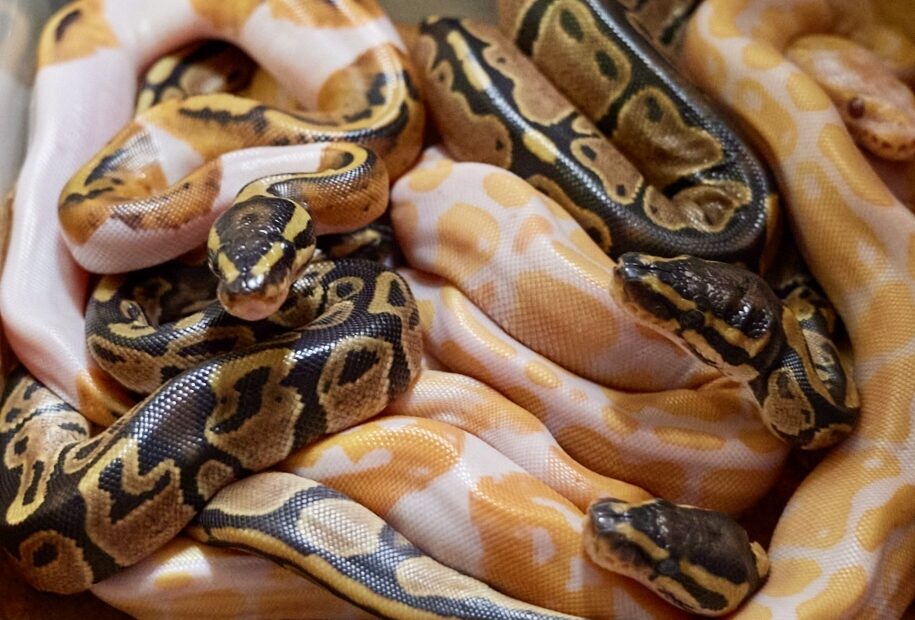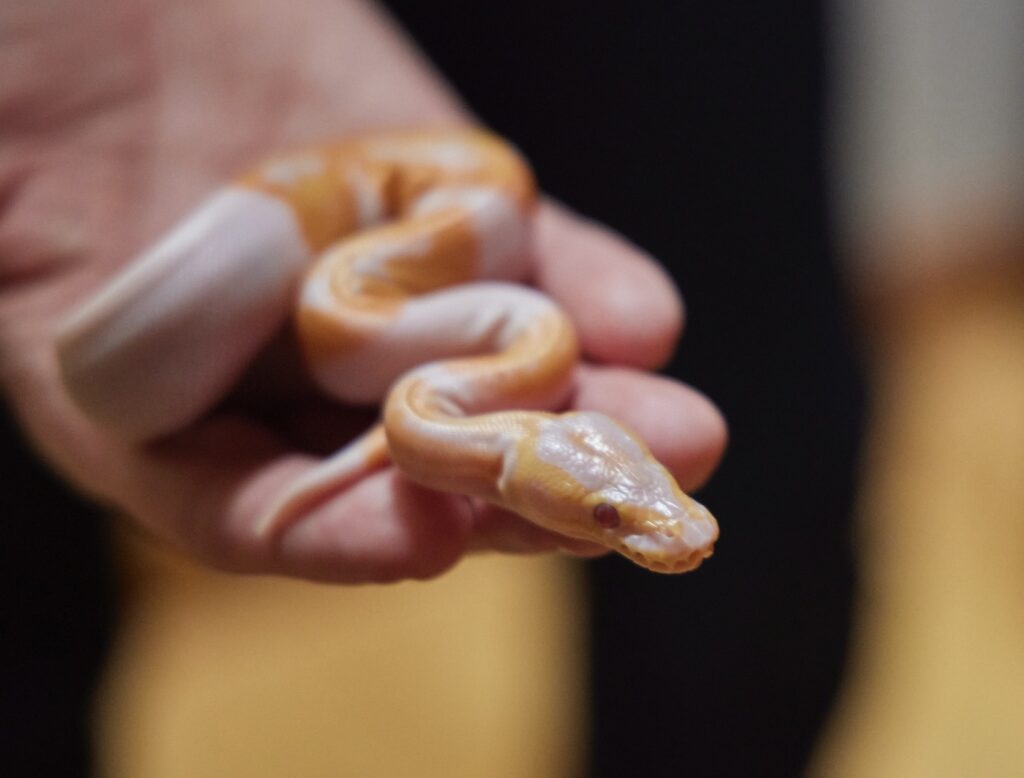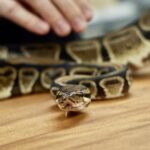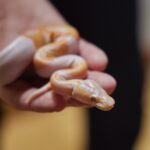
Blog post Breeding Recessive Genes in Ball Pythons
Ball python genetics can be fascinating and complex, especially when dealing with recessive traits like piebald (commonly referred to as “pied”). Understanding the different outcomes of breeding various combinations of visual and heterozygous (het) genes is crucial for any breeder aiming to produce specific morphs. In this post, we’ll explore what happens when you breed visual recessives to visuals, visuals to hets, hets to hets, and hets to normals, all using the pied gene as our example.

Understanding Recessive Genes
Before diving into the breeding scenarios, let’s briefly define a few terms:
- Visual Recessive: A ball python that exhibits the recessive trait because it has two copies of the recessive gene.
- Het (Heterozygous): A ball python that carries one copy of the recessive gene and one normal gene. It does not display the trait but can pass the gene to its offspring.
- Normal: A ball python that does not carry the recessive gene.
Breeding Scenarios
- Visual Pied x Visual Pied
Outcome: 100% Visual Pied OffspringWhen two visual pied ball pythons are bred together, all offspring will inherit one pied gene from each parent, resulting in 100% visual pieds. This scenario is the most straightforward as it guarantees that all babies will display the pied morph.
- Visual Pied x Het Pied
Outcome: 50% Visual Pied, 50% Het PiedBreeding a visual pied to a het pied results in a mix of visual and het offspring. On average, 50% of the babies will be visual pieds (inheriting the pied gene from both parents), and 50% will be het pieds (inheriting the pied gene from the visual parent and the normal gene from the het parent). - Het Pied x Het Pied
Outcome: 25% Visual Pied, 50% Het Pied, 25% Normal
When two het pieds are paired, the offspring will be a combination of visuals, hets, and normals. The breakdown is as follows:
- 25% Visual Pied (two copies of the pied gene)
- 50% Het Pied (one copy of the pied gene and one normal gene)
- 25% Normal (two normal genes)
- (Bonus math! Of the hatchlings that are not visual pied in this scenario – the het pieds and the normal, that odds show that 2/3 will be het for pied, or 66%)
- Het Pied x Normal
Outcome: 50% Het Pied, 50% Normal
Pairing a het pied with a normal ball python will not produce any visual pieds. However, it will result in 50% of the offspring being het pieds (carrying one copy of the pied gene) and 50% being normals (carrying two normal genes).
Why These Scenarios Matter
Understanding these outcomes is crucial for planning breeding projects and managing expectations. By knowing the probabilities, breeders can make informed decisions about which pairings to pursue to achieve their desired results.
The Role of Genetic Calculators
Using a genetic calculator, like the one available at Morph Market, is always useful. These tools can help visualize potential outcomes and probabilities for various breeding scenarios. However, knowing these basics—like multiplication tables in school—is essential for any future breeder.
Key Points to Remember
- Visual to Visual: Guarantees all visual offspring.
- Visual to Het: Results in a 50/50 split of visuals and hets
- Het to Het: Produces a mix of visuals, hets, and normals, with only 25% being visuals.
- Het to Normal: Results in no visuals, but half the offspring will carry the recessive gene.
Conclusion
Breeding ball pythons with recessive genes like pied requires an understanding of genetic probabilities to achieve specific outcomes. By mastering these basics and utilizing tools like genetic calculators, future breeders can strategically plan their projects, aiming for high-quality and desirable morphs.

Ball Python Genetic Basics


